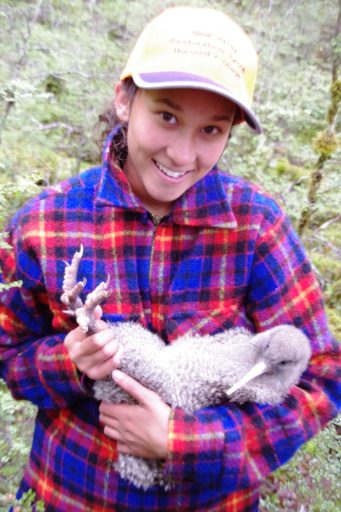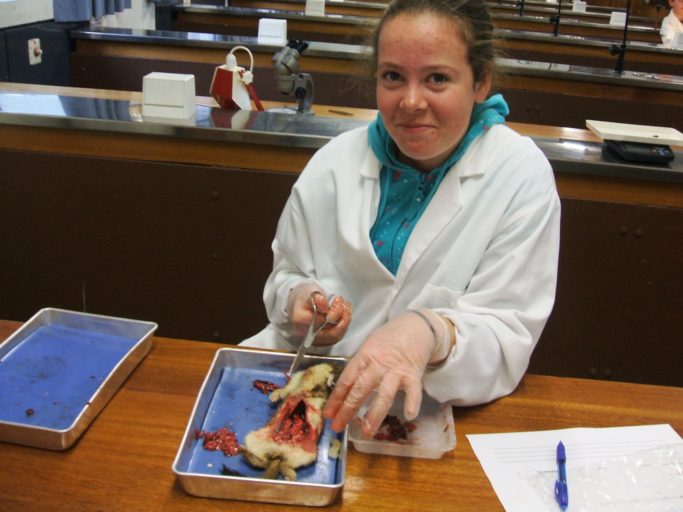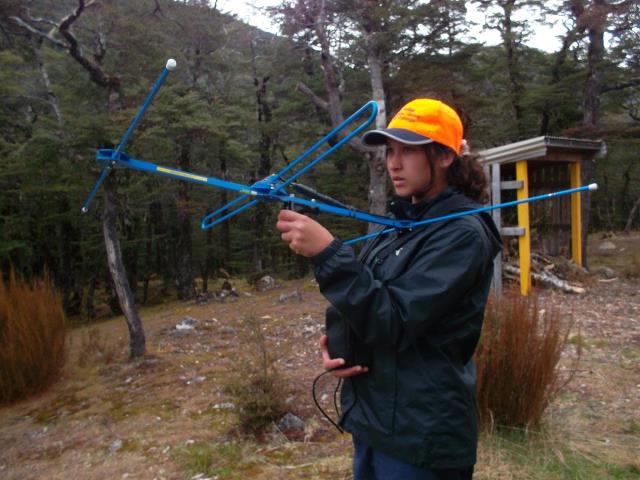The Nina Valley Restoration Group is 10 years old this season and in those 10 years, the Years 7 to 13 students from Hurunui College who make up the group have learnt an impressive array of kiwi-handling skills.

The students not only know how to hold kiwi correctly and safely (those legs are strong!) – they’ve actively taken part in translocation projects, working alongside DOC rangers to capture Raroa (Great Spotted Kiwi) in Arthurs Pass for release in the Nina Valley, near Hanmer Springs. Students even made some of the travel boxes that the kiwi were transported in.
“DOC have been really good about the students being hands on,” says Tim Kelly, the Hurunui College teacher who has managed the group since its beginning. “They have trained the kids to use the telemetry gear to track kiwi, they show them how to change transmitters and how to monitor the welfare of the kiwi. We’ve taken part in both Operation Nest Egg and wild-to-wild transfers.”
Hurunui College is an area school in rural North Canterbury, with pupils ranging in age from 5 to 18 years (Year 0 to Year 13). Students need to be in Year 7 before they can attend the popular away weekends to Nina Valley without a parent, but younger pupils can take part too if a parent is available join the trip.
“It’s mainly the older students,” Tim confirms. “Sometimes new or junior members will come with us as far as the hut, then the more experienced students carry on up to check the traplines as far as the Nina Biv. Some kids are hanging out to reach Year 7 so they can come with us.”
Weekend trips are held every 4 weeks or so to check the school’s 20km network of traplines, although the group is about to take a 2-month break over winter. The work is extra-curricular, but related activities are also regularly incorporated into classwork. Some students visited Lincoln University, for example, learning how to analyse the stomach contents of stoats they had trapped.
“We’re always looking for research opportunities to test things for people,” says Tim, “Like carrying out lure tests or trialling DOC-approved traps. We’re also keen to incorporate technologies into what we do – new trapping technology and new telemetry.”

The school’s Electronic Possum Lures project is one current example of investigating new technologies and involves the students designing and trialling electronic lures.
“The project has been developed during school time,” says Tim. “Students are learning about the design thinking process: they start with a problem – we’re not catching enough possums – then come up with ideas and designs to solve the problem. They then make prototypes, the best of which are reproduced and tested in a scientific manner in the bush.”
Tim believes in plenty of variety to motivate his students.
“We’ve tried a lot of different things, so it’s not just all donkey work,” he says. “We keep it interesting by doing different things.”
The Nina Valley Ecoblitz was a joint project that Nina Valley Restoration Group organised in 2014 in conjunction with Lincoln University and Department of Conservation.
“It involved 200 senior students from 15 different schools working alongside a huge number of ecologists and scientists in the Nina Valley for 48 hours,” Tim explains. “They spent the weekend monitoring all the wildlife in the area and recording what they found in a scientific way. The weekend was 100% free to students. We want to go back and do another follow-up ecoblitz, but would need to find more funding first.”

Hurunui College students are also becoming more involved in environmentalism and sustainability.
“They’ve been working with ECAN (Environment Canterbury),” says Tim, “Making submissions on public policy and climate change. ECAN has a strong policy of encouraging youth involvement.”
Another, very recent partnership, is with the Kea Conservation Trust.
“The Kea Conservation Trust have banded 4 kea in the Nina Valley and fitted them with transmitters and we’ve just started working with them to monitor those kea,” says Tim. “We may be working in other valleys as well as Nina. We also have whio (blue ducks) in the Nina Valley and we carry out river surveys and monitor the whio.”
More kiwi translocations are also likely to occur in the future. In the meantime, students are continuing to monitor the success of the kiwi which have already been translocated to Nina Valley. The birds have settled, begun pairing up and it is hoped that kiwi chicks will be growing up in Nina soon.
“At the moment our kiwi work has slowed,” says Tim. “We’re waiting for Arthurs Pass kiwi numbers to build up before we carry out any more translocations.”

One of the benefits of being a school group is that there is always a steady flow of new volunteers from the junior school reaching Year 7 and coming into the group.
“The older students move into leadership roles and once the younger students join, they’re motivated to stay on and get into leadership too,” says Tim. “We’re also motivated by the fact that if we don’t do it, no-one will. DOC can’t afford to do everything and in our area there are no other groups around who could take on a project this size.”
The hard work and achievements of Tim’s students hasn’t gone unnoticed. They’ve won a number of awards over the years, including the Green Ribbon Supreme Award in 2014, have appeared in television news items and count Lou Sanson, Director General of the Department of Conservation, as one of their strongest supporters.
Best of all, students get to hang out with DOC staff and university scientists on a regular basis, doing real, hands-on conservation ranger work and getting up close and familiar with iconic New Zealand wildlife like the kiwi. It’s no wonder that some of Tim’s former students have gone on to be conservation scientists and DOC rangers themselves.
Happy 10th Anniversary, Nina Valley Restoration Group – you rock!

